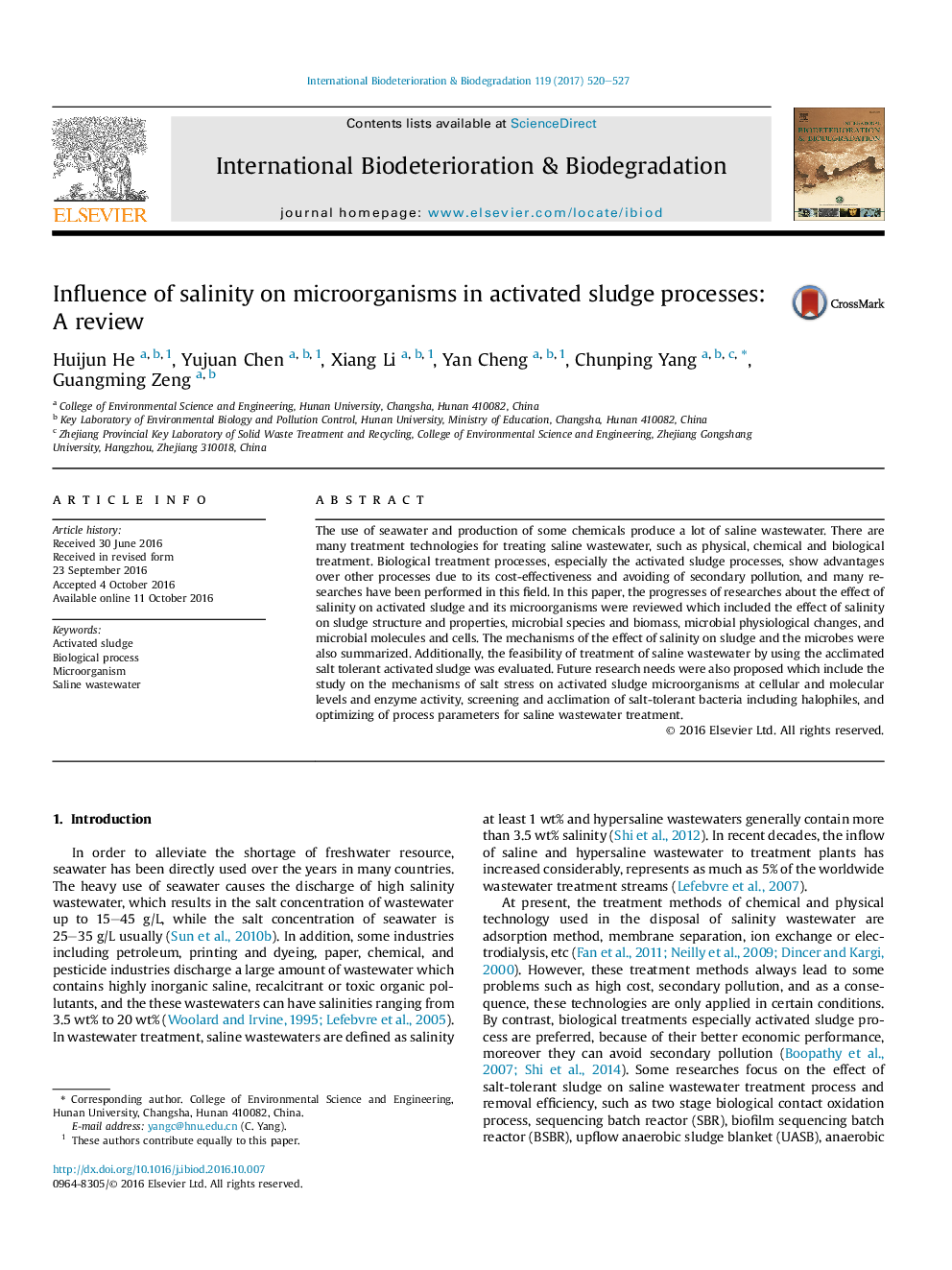| Article ID | Journal | Published Year | Pages | File Type |
|---|---|---|---|---|
| 5740479 | International Biodeterioration & Biodegradation | 2017 | 8 Pages |
â¢The effect of salinity on sludge structure and properties, microbial biomass, microbial physiological changes, microbial molecules and cells was reviewed and commented.â¢The different salt tolerant microbial species and their activity in high salinity condition were illustrated.â¢The mechanisms of the effect of salinity on activated sludge processes and microorganisms were summarized.
The use of seawater and production of some chemicals produce a lot of saline wastewater. There are many treatment technologies for treating saline wastewater, such as physical, chemical and biological treatment. Biological treatment processes, especially the activated sludge processes, show advantages over other processes due to its cost-effectiveness and avoiding of secondary pollution, and many researches have been performed in this field. In this paper, the progresses of researches about the effect of salinity on activated sludge and its microorganisms were reviewed which included the effect of salinity on sludge structure and properties, microbial species and biomass, microbial physiological changes, and microbial molecules and cells. The mechanisms of the effect of salinity on sludge and the microbes were also summarized. Additionally, the feasibility of treatment of saline wastewater by using the acclimated salt tolerant activated sludge was evaluated. Future research needs were also proposed which include the study on the mechanisms of salt stress on activated sludge microorganisms at cellular and molecular levels and enzyme activity, screening and acclimation of salt-tolerant bacteria including halophiles, and optimizing of process parameters for saline wastewater treatment.
